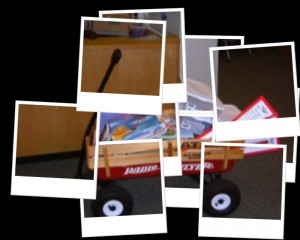In last week’s blog post, I outlined the scenario that has been unfolding in Vermont concerning proposed changes in the state statutes that describe school quality standards. In the draft document, language about school libraries and staffing was eliminated, and a group of volunteers from the Vermont School Library Association (VSLA) has been collaborating to make sure that the language is reinserted. So far, the action plan that was developed through the collective capacity of the group has been well received, and we are quite confident that our advocacy is on a successful track.
Here are a few ideas about collaborating for advocacy based on our experience:
- Set group communication and actions-meetings face to face and virtual-Google docs, presentations, Skype, email, listserv.
Our group began meeting in late August, just as the school year was underway. Certainly, it was not a time for leisurely study of the issues, and we were aware that the Vermont Board of Education would be scheduling public hearings on the proposed changes in October. Our window of opportunity would be short. Since we represented schools in both urban and rural areas from far corners of the state, we set up Google docs and used Skype when someone could not meet face to face. TGFG-Thank goodness for Google! After brainstorming a “to do” list, each person took responsibility for a piece of the action, and shared through our Google documents, presentations, and email.
- Understand the issues, and the process, develop talking points.
Fortunately, the State Librarian was part of the group, and her contacts at the state level allowed us to move forward quickly. The person who was the project coordinator for the revised document was very helpful in explaining the process so far, and also for helping us to understand that we still had an opportunity to suggest changes. As a talking point, we developed a chart that compared the previous document to the proposed one. It clearly showed that all references to school libraries and library staffing had been eliminated. It included our suggested language to be reinserted, as well as, a rationale for school library programs, regionally and nationally.
- Create a list of possible contacts, and supporters.
Brainstorming our own contacts, we came up with a list of possible people who might be in a position to help in advocacy planning. We knew that we would need to alert our membership, but we wanted to have a clear message before we “called in the troops.” We knew that we wanted the message to focus on the impact on students, not on our jobs. We wanted to show what would happen if school library programs were not available for children all over the state. Lots to think about!
- Create a timeline of events, actions.
Through the State Librarian, we were able to schedule a meeting with the Secretary of Education, so that we could advocate for restoring language about school libraries and school library staffing to the Education Quality Standards. After that meeting, we were assured that he would support our request with the State Board of Education during the review process.
On September 17, the president of VSLA, Denise Wentz, and I made a presentation at the monthly meeting of the State Board of Education. Our focus was on the positive impact of school library programs in our state. See slide 22 for our concise talking points, “Why a School Library Program?” https://docs.google.com/presentation/d/1RAY0bX0RwK1Ets1ky80DWH9KxftZADVcCZ7Ft8ZdTbc/edit#slide=id.g11a3c625c_2_42
Three public hearings will be held in October, and we are encouraging or members to bring supporters who will tell why school library programs are important to them. Alternately, we are asking supporters to send letters or email to the Board during the public comment period.
- Gather resources to support talking points.
Have your ducks lined up in one place that can be shared with all stakeholders. There are many resources available from a variety of organizations, experts, and bloggers. In order to share the best of the best with our membership, we have gathered recommended “go to” sites, infographics, and documents that can be used to support school library advocacy. We are happy to share them with everyone through this livebinders link: Advocacy for School Libraries http://www.livebinders.com/play/play?id=1014077&backurl=/shelf/my
- Communicate with membership and other stakeholders.
Advocacy is an ongoing and organic process. In VSLA, we will continue to focus on advocacy at all levels. It is not done by presenting at one meeting to administrators or school board members. It is accomplished day to day with intentional purpose for making sure that the school library program is visible and essential for all learners. Blogs, photos, newsletters, and websites are great vehicles for continuing to put a face on our programs. Have a brand, have a mission, and don’t be afraid to shine.

